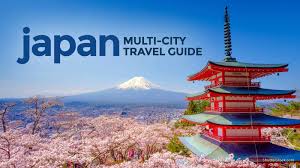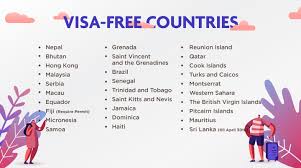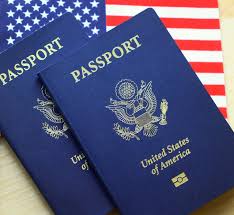Japan is a country that seamlessly blends the old with the new. From the futuristic skyline of Tokyo to the ancient temples of Kyoto, Japan offers a unique blend of tradition, technology, and nature.
If you’re planning a trip to Japan, you’ll need to prepare carefully to make the most of your experience. This article will guide you through all the steps of traveling to Japan, from the visa application process to navigating Japanese culture.
1. Visa Requirements and Entry Regulations
For many travelers, Japan offers visa-free entry for short stays (up to 90 days) depending on your nationality. Countries like the United States, Canada, the UK, and most European Union nations are eligible for visa-free travel. However, it’s essential to verify your country’s specific requirements by visiting the official Japanese immigration website or contacting a Japanese embassy or consulate.
If you’re from a country that requires a visa, you’ll need to apply in advance. Japan offers various types of visas depending on the purpose of your visit, including tourist visas, business visas, and work visas. For a tourist visa, you’ll generally need:
- A valid passport (with at least six months validity)
- A completed visa application form
- A recent photograph
- A travel itinerary and flight details
- Proof of sufficient financial means (bank statements or proof of income)
- Proof of accommodation (hotel reservations or a letter of invitation if staying with someone)
Some travelers may also need to provide additional documents, so always check the requirements specific to your country.
COVID-19 Entry Regulations
As of recent developments, Japan has implemented certain health and safety protocols for international travelers due to the COVID-19 pandemic. Be sure to check Japan’s Ministry of Foreign Affairs website for the latest updates on entry requirements, such as vaccination proof, PCR tests, or quarantine measures.
2. Best Time to Visit Japan
Japan’s four distinct seasons offer something unique at every time of year. Here’s an overview of what you can expect during each season:
- Spring (March to May): This is one of the most popular times to visit Japan due to the cherry blossom (sakura) season. The beautiful pink flowers blanket the country, making it a favorite for tourists and locals alike. However, it’s also one of the busiest times, so booking accommodations and flights well in advance is crucial.
- Summer (June to August): Japan’s summers are hot and humid, but it’s also the season of vibrant festivals, known as matsuri, and fireworks displays. Hokkaido, in the north, is cooler and a popular destination for those looking to escape the summer heat. July and August are also great times for hiking, especially on Mount Fuji.
- Autumn (September to November): The fall season offers stunning autumn foliage, known as koyo. The temperatures are more comfortable, making it ideal for sightseeing and outdoor activities. Japan’s gardens, temples, and parks are particularly beautiful at this time of year.
- Winter (December to February): Winter brings snow to northern Japan, making it a top destination for skiing and snowboarding enthusiasts. Places like Hokkaido and the Japanese Alps are known for their world-class slopes. In addition, winter is a quieter tourist season, which means lower travel costs and fewer crowds.
3. Planning Your Itinerary
Japan offers an incredible array of destinations, so planning your itinerary depends on your interests, budget, and time. Here are a few must-visit cities and regions:
Tokyo
As Japan’s capital and largest city, Tokyo is a must-see for any visitor. It’s known for its towering skyscrapers, bustling shopping districts, and world-class restaurants. Tokyo is also a cultural hub, with attractions like the Meiji Shrine, Asakusa’s Senso-ji Temple, and the Tsukiji Fish Market.
Kyoto
Kyoto is the historical and cultural heart of Japan, famous for its temples, shrines, and traditional wooden houses. Some of the key attractions include the Fushimi Inari Shrine, Kinkaku-ji (the Golden Pavilion), and the bamboo groves of Arashiyama.
Osaka
Known for its vibrant food scene, Osaka is a city where you can experience some of the best street food in Japan, including takoyaki (octopus balls) and okonomiyaki (savory pancakes). Osaka is also home to Osaka Castle and Universal Studios Japan.
Hokkaido
If you’re a nature lover, Hokkaido is a perfect destination. In winter, it’s a haven for winter sports enthusiasts, while in summer, its cool climate and lush landscapes are ideal for hiking, camping, and exploring national parks like Daisetsuzan.
Hiroshima
Hiroshima is a city with a tragic past but a hopeful future. The Peace Memorial Park and Museum, dedicated to the victims of the atomic bomb, is a moving experience. Nearby, the island of Miyajima is home to the iconic floating torii gate of Itsukushima Shrine.
4. Flights and Transportation
Booking Flights
When booking flights to Japan, you’ll likely land at one of the country’s major international airports:
- Narita International Airport (NRT) or Haneda Airport (HND) in Tokyo
- Kansai International Airport (KIX) in Osaka
- New Chitose Airport (CTS) in Sapporo, Hokkaido
- Chubu Centrair International Airport (NGO) in Nagoya
Direct flights to Japan are available from many major cities worldwide, but prices can vary greatly depending on the season. For the best deals, book flights at least three to six months in advance, and consider flying on weekdays, which tend to be cheaper.
Getting Around Japan
Japan boasts one of the most efficient public transportation systems in the world. The Japan Rail (JR) system is the backbone of the country’s transportation, connecting cities via high-speed shinkansen (bullet trains).
- JR Pass: If you plan to travel between cities, purchasing a Japan Rail Pass can save you money. This pass allows unlimited travel on JR trains (including most bullet trains) for 7, 14, or 21 days. However, the pass must be purchased before arriving in Japan.
- Local Transportation: Major cities like Tokyo, Osaka, and Kyoto have extensive metro systems, which are easy to navigate. Each city offers prepaid travel cards, such as Suica or Pasmo in Tokyo, and Icoca in Osaka, which allow you to tap in and out of stations without needing to buy individual tickets.
- Taxis and Ride-Sharing: Taxis in Japan are safe and reliable, but they can be expensive. Uber is available in some cities but is not as widely used as in other countries.
5. Accommodations
Japan offers a wide range of accommodation options for every budget:
- Hotels: Japan has numerous international and domestic hotel chains that cater to different price points. Business hotels are a budget-friendly option and are commonly found near train stations.
- Ryokan: For a more traditional Japanese experience, consider staying in a ryokan (traditional Japanese inn). These establishments offer tatami-matted rooms, communal baths, and often include traditional Japanese meals (kaiseki).
- Hostels and Capsule Hotels: For budget travelers, hostels and capsule hotels are widely available, especially in major cities. Capsule hotels, in particular, offer a uniquely Japanese experience with compact, single-person pods.
- Airbnb: Airbnb is also popular in Japan, especially in cities like Tokyo and Kyoto. However, make sure to check local regulations, as some areas have restrictions on short-term rentals.
6. Money Matters
Currency and Payment Methods
Japan uses the Japanese yen (¥). While credit cards are becoming more widely accepted in urban areas, Japan is still a predominantly cash-based society, especially in rural areas, small restaurants, and traditional markets.
- ATMs: ATMs can be found in convenience stores (like 7-Eleven or Lawson), and they typically accept international cards. Be aware that ATMs may not be available 24/7, especially outside of major cities.
- Tipping: Tipping is not customary in Japan and can even be considered rude in some situations. Instead, good service is included in the price of your meal or service.
Budgeting Your Trip
The cost of traveling to Japan can vary significantly depending on your travel style. Here’s a rough guide to what you can expect:
- Budget Travelers: If you’re staying in hostels, eating at budget restaurants, and using public transportation, you can expect to spend around ¥8,000-¥10,000 ($70-$90) per day.
- Mid-Range Travelers: For mid-range travelers staying in business hotels, eating at casual restaurants, and visiting a few paid attractions, your daily budget could range from ¥15,000-¥25,000 ($135-$225).
- Luxury Travelers: If you’re looking to stay in high-end hotels, dine at upscale restaurants, and travel by taxi, your daily expenses could exceed ¥30,000 ($270) or more.
7. Japanese Etiquette and Cultural Tips
Understanding Japanese etiquette can greatly enhance your travel experience and show respect for the local culture. Here are some key tips to keep in mind:
- Bowing: Bowing is a common form of greeting in Japan. While a slight nod is sufficient for tourists, understanding when and how to bow can help you navigate social situations more respectfully.
- Shoes Off Indoors: In many traditional settings, such as ryokan, temples, and some restaurants, you’ll need to remove your shoes. Be sure to look for a designated area where shoes are to be removed, and wear clean socks.
- Queueing: Japanese people are known for their orderly behavior, and you’ll often see people queuing in an organized manner, whether at train stations, elevators, or stores. It’s important to follow these norms.
- Silence on Public Transport: Talking loudly on public transportation is considered impolite. Keep conversations low and avoid talking on the phone while on trains or buses.
- Gift-Giving: When staying with someone or visiting a local’s home, bringing a small gift (known as omiyage) is a nice gesture. Items from your home country or local specialties are appreciated.
8. Language and Communication
Although English is taught in schools, Japan is not an English-speaking country, and you may encounter language barriers, especially outside of major tourist areas. Learning a few basic Japanese phrases can go a long way in making your trip more enjoyable. Some key phrases to know include:
- Konnichiwa (こんにちは) – Hello
- Arigatou gozaimasu (ありがとうございます) – Thank you
- Sumimasen (すみません) – Excuse me/sorry
- Eigo o hanasemasu ka? (英語を話せますか?) – Do you speak English?
- Doko desu ka? (どこですか?) – Where is it?
While many signs in major cities are in English, having a translation app, such as Google Translate, can also be useful.
9. Safety and Travel Insurance
Japan is one of the safest countries in the world, with low crime rates. However, it’s still a good idea to follow basic travel safety guidelines, such as keeping an eye on your belongings and avoiding poorly lit areas at night.
Travel Insurance
It’s also essential to have travel insurance when visiting Japan. In case of an emergency, medical costs in Japan can be high, and travel insurance will cover unexpected expenses such as hospital visits, trip cancellations, or lost luggage.
10. Packing for Your Trip
When packing for Japan, consider the season and the activities you plan to do. Here are a few essentials:
- Comfortable Walking Shoes: Japan’s cities are very walkable, so you’ll spend a lot of time on your feet.
- Seasonal Clothing: Pack accordingly for the season you’re visiting. Layers are important during spring and autumn, while light, breathable clothing is essential for the humid summers. Winters, especially in the north, require warm jackets and gloves.
- Adapters: Japan uses Type A and Type B electrical outlets (100 volts). If your devices use different plugs, bring an adapter.
- Medication: Bring any necessary medications with you, as some may not be easily available in Japan, and make sure they comply with Japanese regulations.
Conclusion
Traveling to Japan is an enriching experience that offers a perfect blend of modern innovation, historical landmarks, and natural beauty. Whether you’re exploring the bustling streets of Tokyo, meditating at a serene Kyoto temple, or enjoying a ski trip in Hokkaido, Japan promises unforgettable memories.
By planning ahead, understanding local customs, and navigating Japan’s efficient transportation system, you’ll be well-prepared for an amazing adventure.






